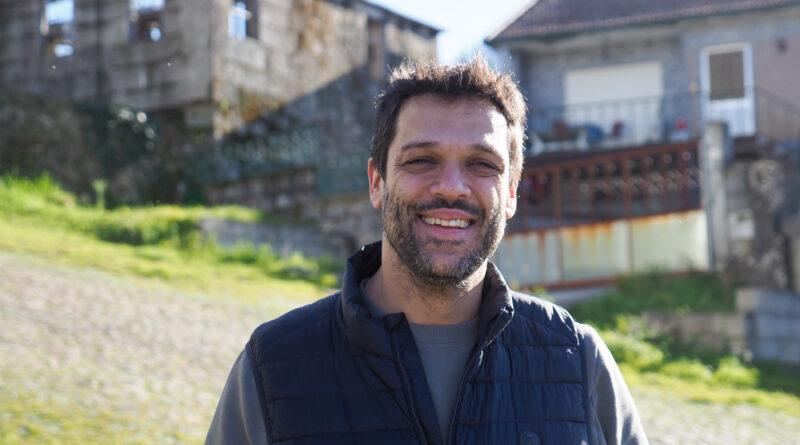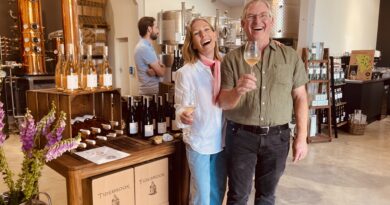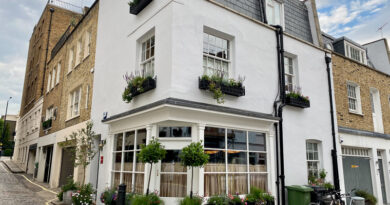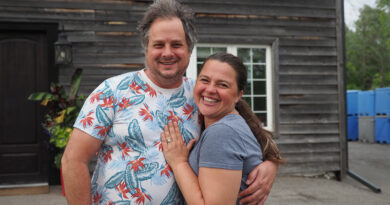Visiting Constantino Ramos, resurrecting the red wines of Monção and Melgaço in the Vinho Verde region of Portugal
‘My background is from the pharmaceutical industry,’ says Constantino. ‘My family didn’t produce wine.’ He did a degree in pharmacy at Coimbra University and was working in clinical trials in Lisbon, and this is where he met his wife, Margarida.
After five years of this work, one night he told Margarida that he was not enjoying his work. ‘I didn’t like the feeling of waking up every day to go to work, it felt like purgatory.’ She responded, well, what do you like? His answer: wine.
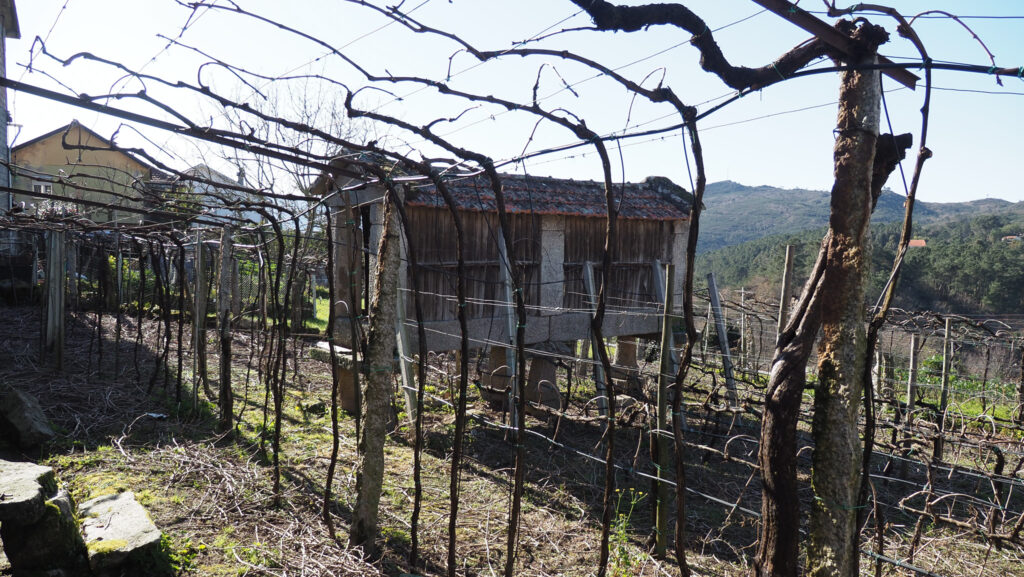
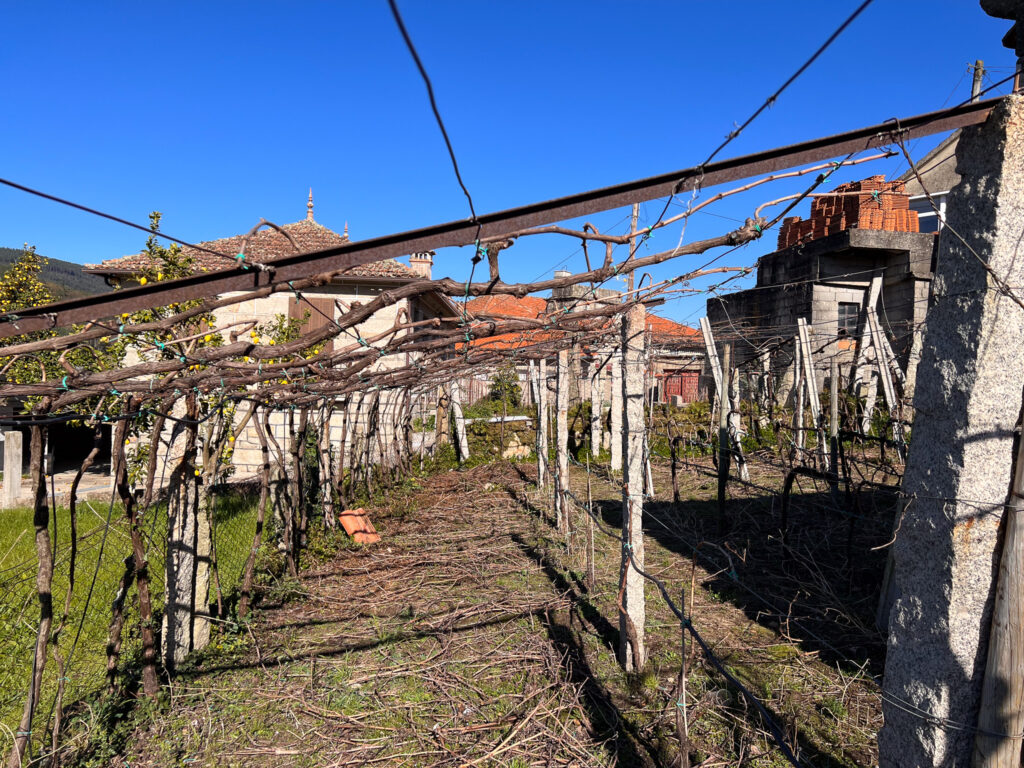
This was in 2009, and he had been doing some courses in tasting wine. He went to London to study the WSET level 2 and 3 exams. ‘I told her that I’d like to be a winemaker,’ he said. ‘I was hoping she’d say no, but she said yes, let’s do it.’ She was working from home, so they could move to Vila Real (in the Douro) where Constantino took a master’s degree in enology and viticulture. Then he went to do an internship at Quinta dos Roques in the Dão, which is where he comes from (his home town is near Viseu). In the second year he did an internship with Alves de Sousa in the Douro. He had a great experience there, and learned a lot.
Back then, the consultant winemaker at Alves de Sousa was Anselmo Mendes, and Constantino also got along well with him. ‘He invited me to go and work with him in Melgaço [Vinho Verde] which was great, because my wife’s family is from Monção. She was pregnant by then.’ This meant they could move there and have the support of her family.
Constantino stayed with Anselmo in January 2022, after 9 years. It was during this period that he learned a lot about Monção and Melgaço, and the Alvarinho grape variety. But the first wine under his own name turned out to be from red grapes, which used to be more significant in the region. ‘Since I have some doors through my wife’s family, I was challenged by a cousin of hers to make a red wine.’ Constantino learned that for many centuries this region was actually focused on red wines.
‘In 2015 I was still tasting a lot of international wines, and I was loving the less extracted, less alcoholic red wines. I like the style that was more vertical, more granitic, and I started wondering whether in this region I could make something similar to that.’
The region is short of old white vines, because most growers are selling to the large producers and coops and are planting young vineyards that yield well. ‘They are aiming for kilograms,’ says Constantino, ‘so there was no tradition of old white vines.’ But the opposite was happening with reds: ‘since no one cared about the reds, there were a lot of old vineyards in pergola systems that were mostly maintained by old people.’ These grapes were mostly used for home production.
Constantino’s cousin had a small vineyard in the hamlet of Riba de Mouro and he challenged him to make something a bit different from the regular style of Vinho Verde red. He accepted the challenge and using this small vineyard he made something different. He picked the grapes, destemmed them and put them in big plastic bins, but then he did a two day cold maceration. Then he pressed the grapes and fermented them as a white to make something more elegant and easy drinking. This was a field blend of different red varieties (the tradition of red Vinho Verde made from Vinhão is in the south of the region, starting at Ponte Lima).
He was quite happy with the resulting wine, which he named Zafirah. So Constantino bottled it and took it to the market, and it gave him confidence to make something a bit more serious in the following year (2017).
The vineyards are from vineyards at 200-400 m in the Vale do Mouro (higher than most of the sites in Monção and Melgaço): there’s a string of villages in the region at this altitude that in the past were famous for having the best red wines, but which of late had been a little deserted, with people moving away. His cousin also had a small plot of Alvarinho, so Constantino decided to work solely in this part of Monção, in Riba de Mouro. ‘Back then I was working with Anselmo, so this was a sideshow, a part-time job,’ he says. ‘It was also important for me to have something to give to the community. It is a different landscape. Wine is not just the business of selling bottles, it is a cultural thing – it is people that live there, the landscape you see.’
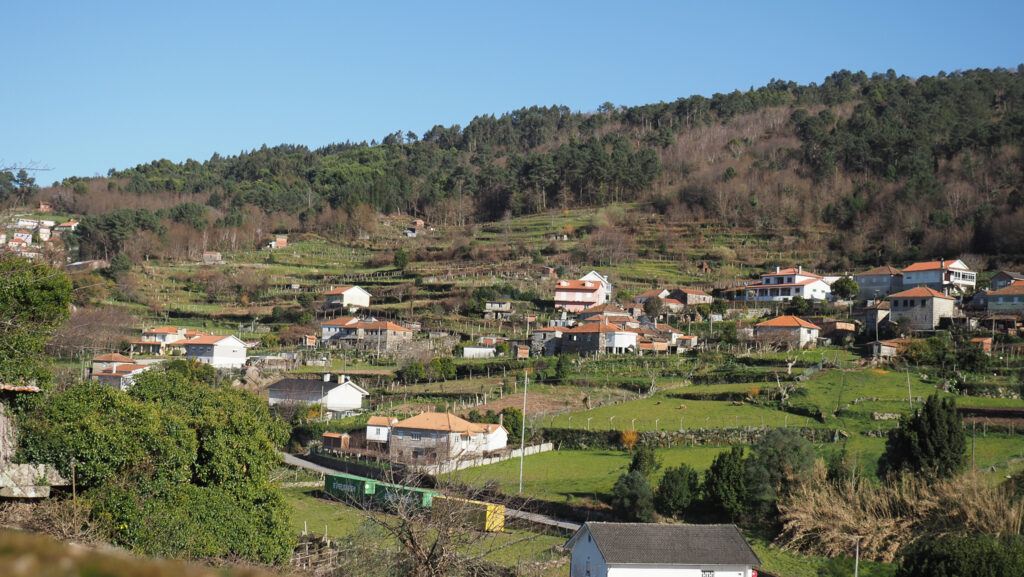
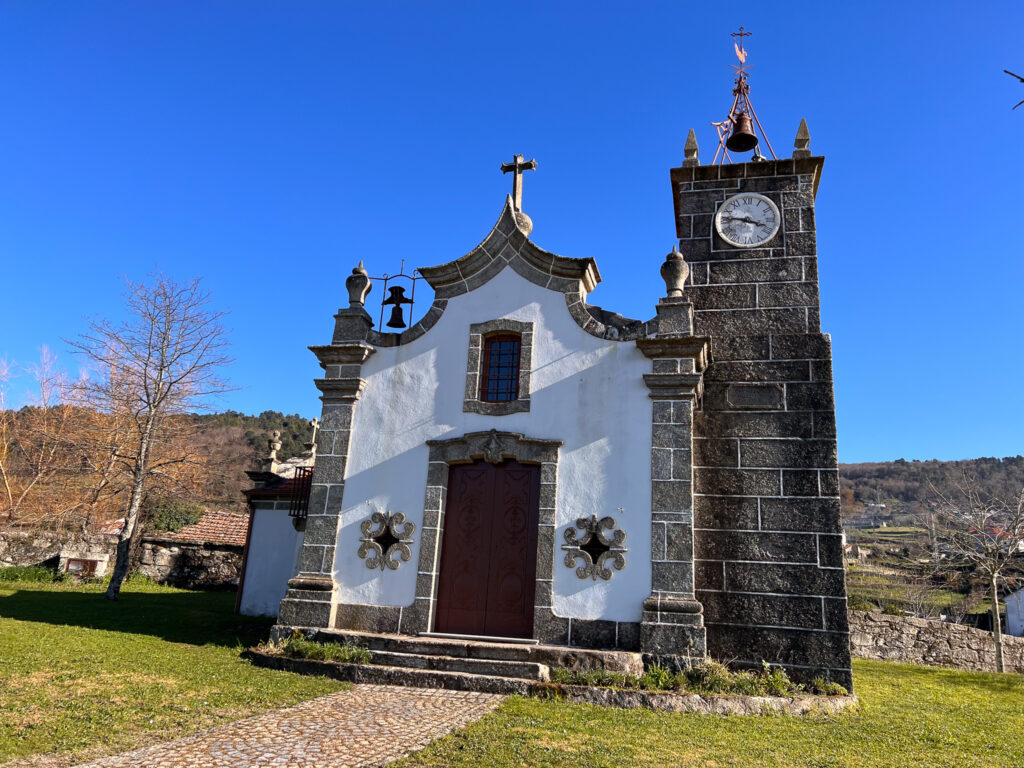
He decided that Alvarinho from here works better with oak, so he bought some used barrels from Anselmo. He works with wild ferment, because Alvarinho tends to ferment too fast with commercial yeasts and becomes too peachy and tropical.
One of the challenges is that while his grape suppliers are very happy (he pays them better), they are old and their children usually live in the city. This could be a problem in the future because the vineyards could be abandoned. So in 2022 he began planting grapes (beginning with half a hectare), to make sure he’s buffered against the loss of some of these old vineyards. He’s not using ramada (pergola), but planting in rows. Currently his red wine changes a lot each vintage because the vineyards are high up and in a cold year they struggle to mature properly. In 2021 he picked in the middle of October, because it was a cold year. The wine was 10.7% alcohol; in 2022 it was 11.7%. The acidity is always high.


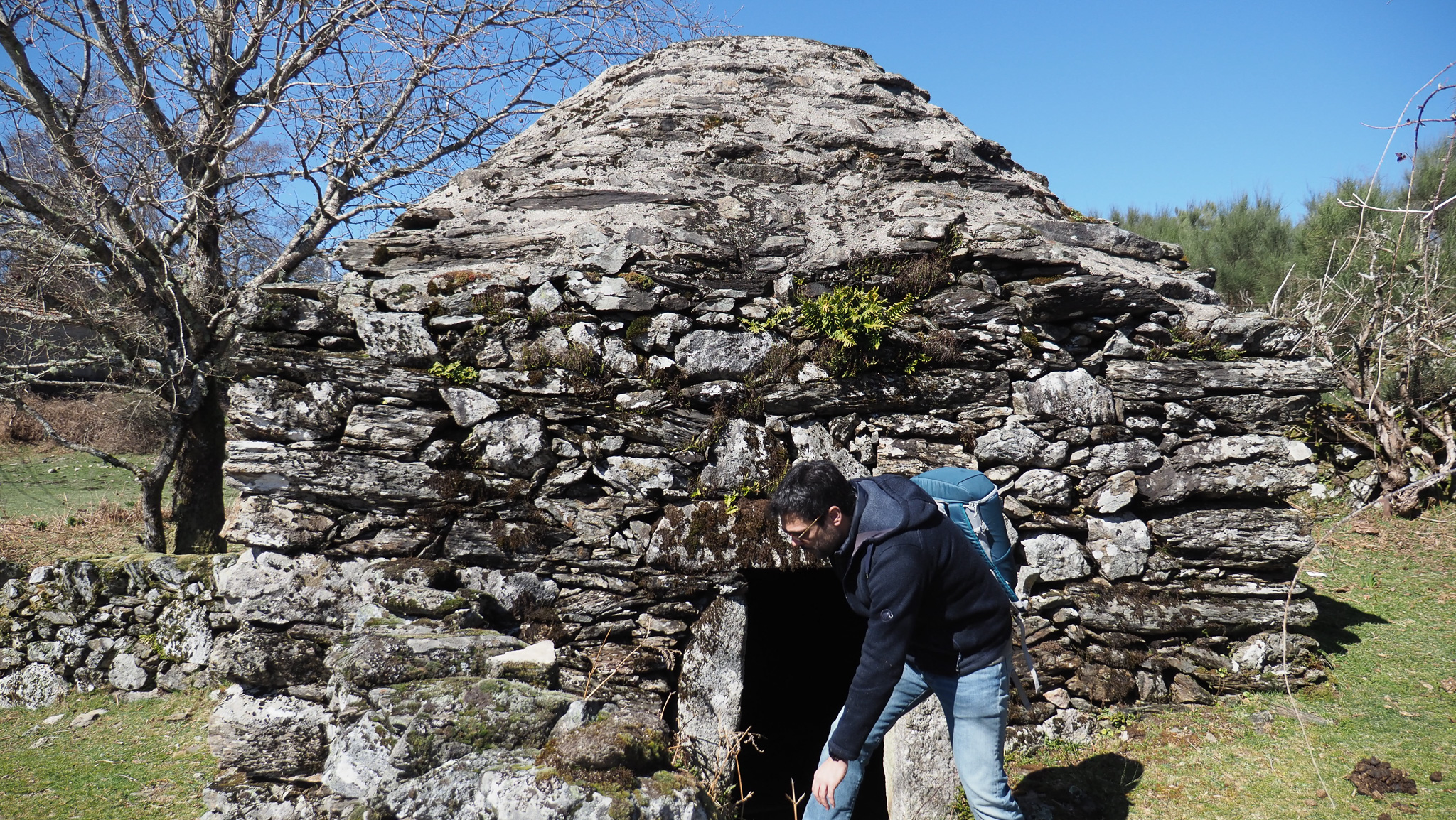
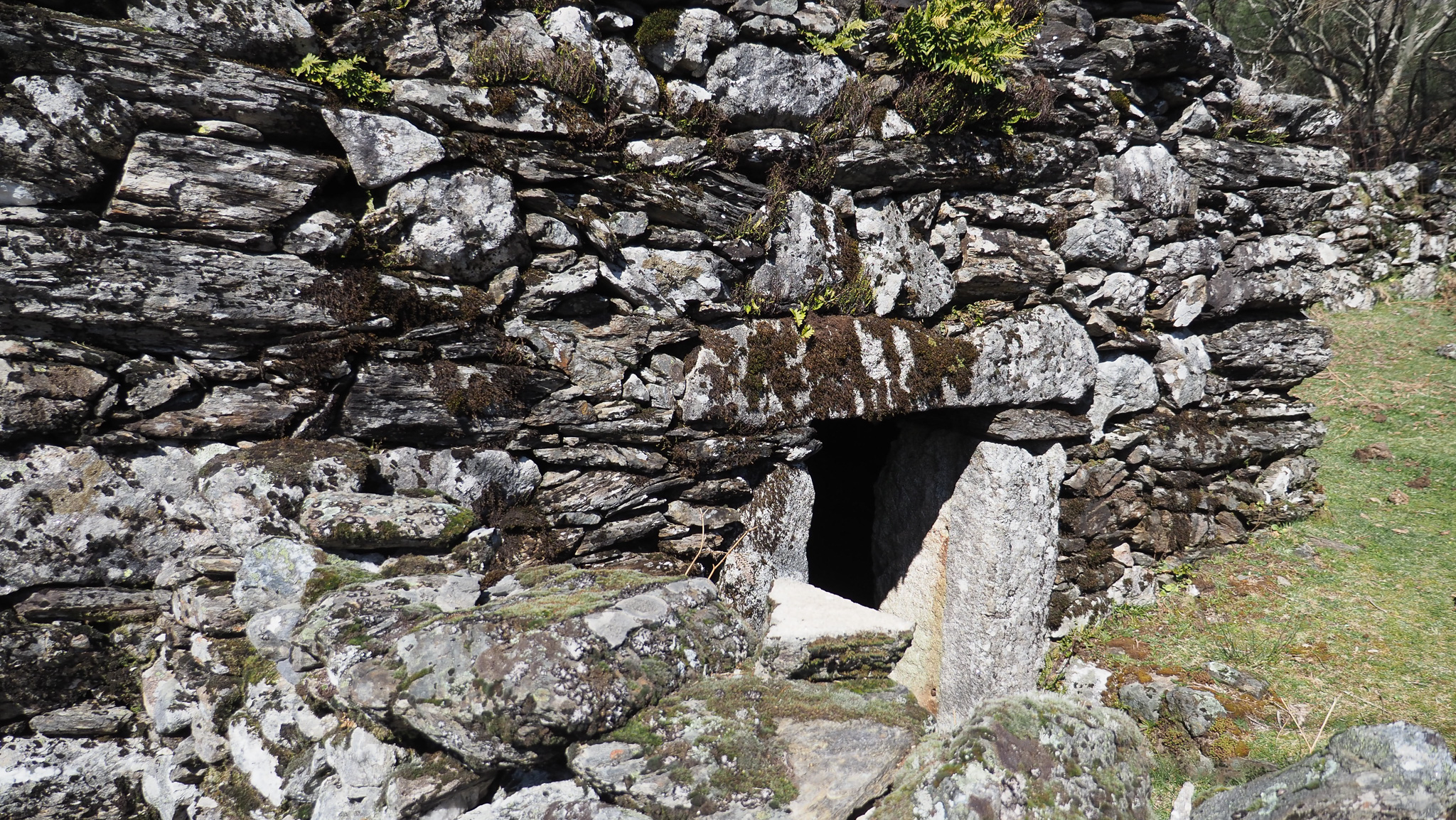
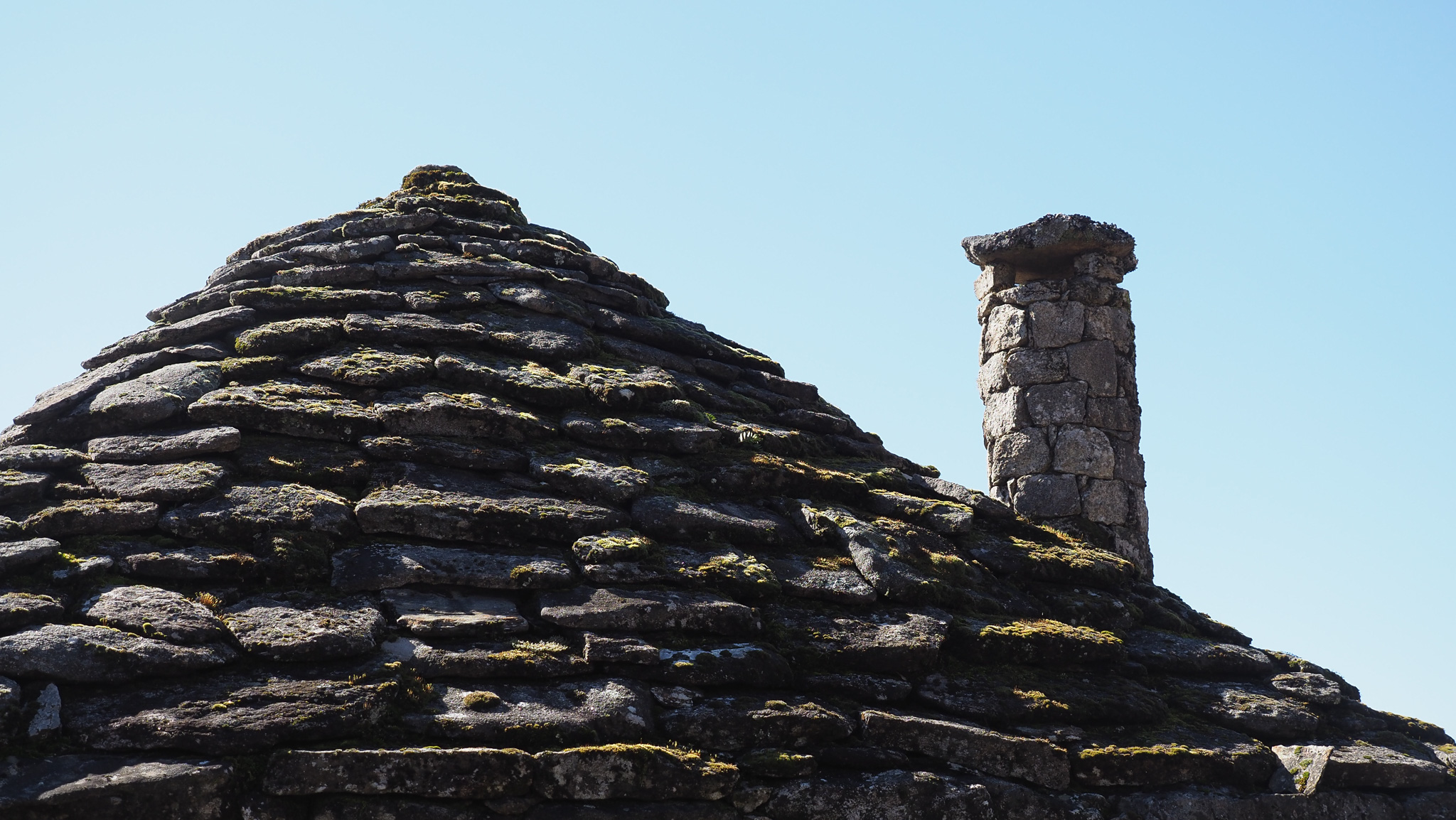
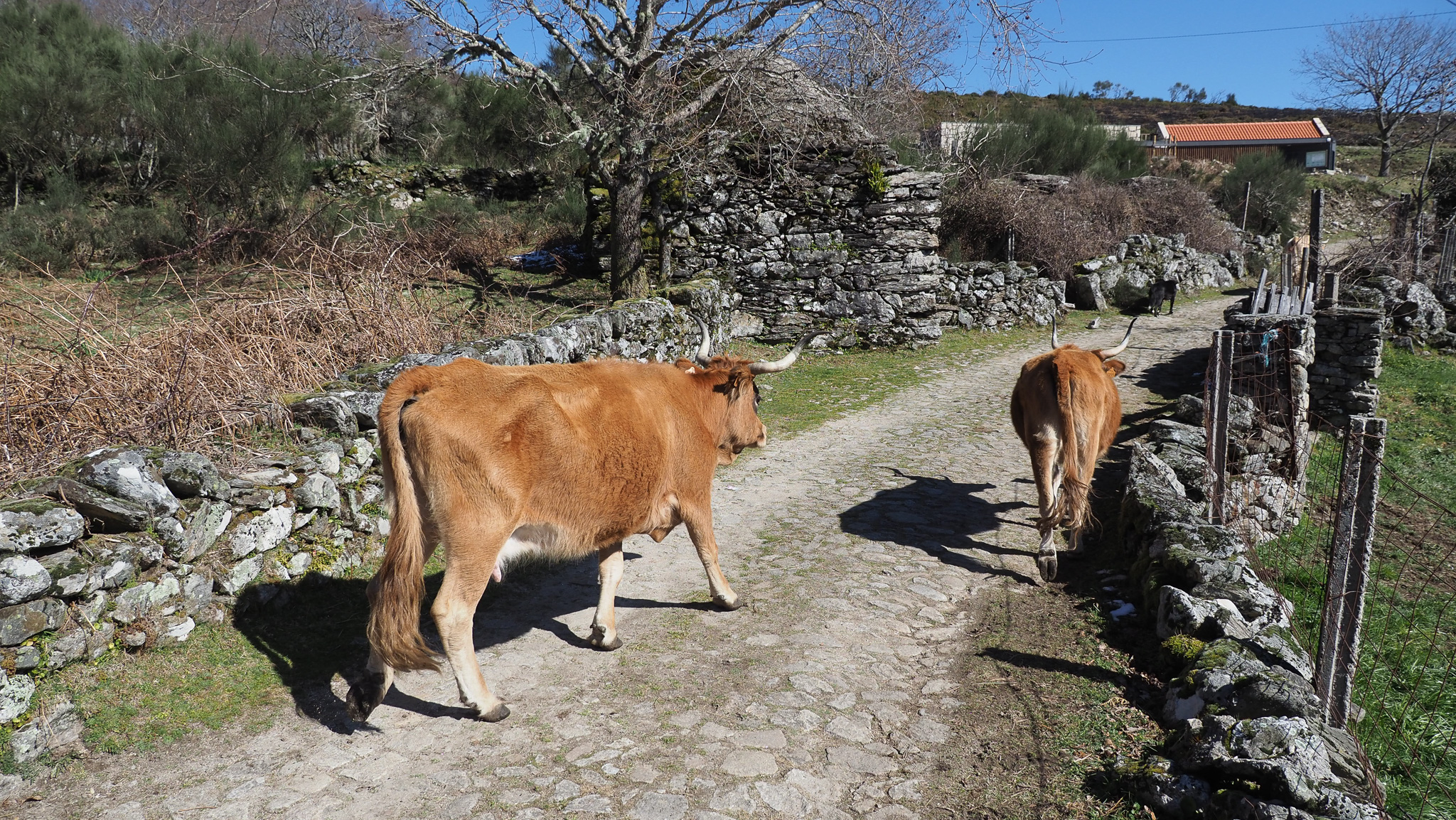
We began our visit in the hamlet of Branda de Santa António, which is at the top of the mountain at 1000 m. This is owned by Riba de Mouro and is where the villagers would move with their cows for summer grazing. This hamlet dates back to the middle ages when brandeiros, the cow herders, would move their animals for the warmer months and live in the brandas, built by hand from granite and schist stones they found. The buildings, cardenhas, are mostly one-storey, but some have two. They would live in them with their animals. It’s a remarkable place. We even met some of the local cows which are herded by dogs.
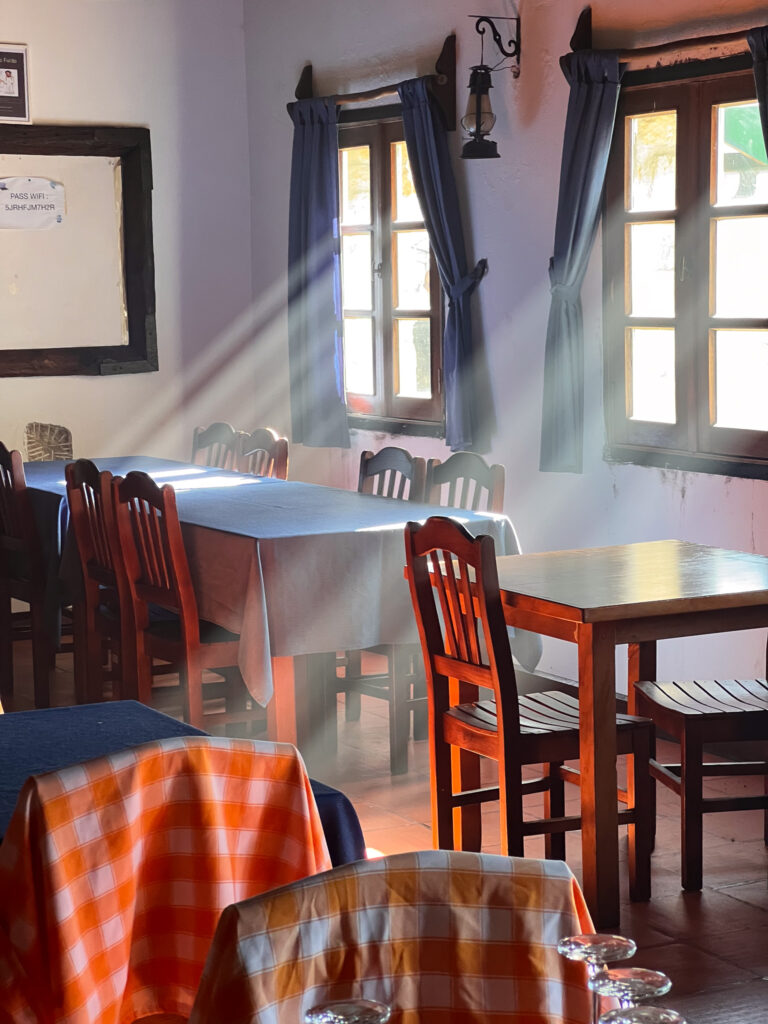
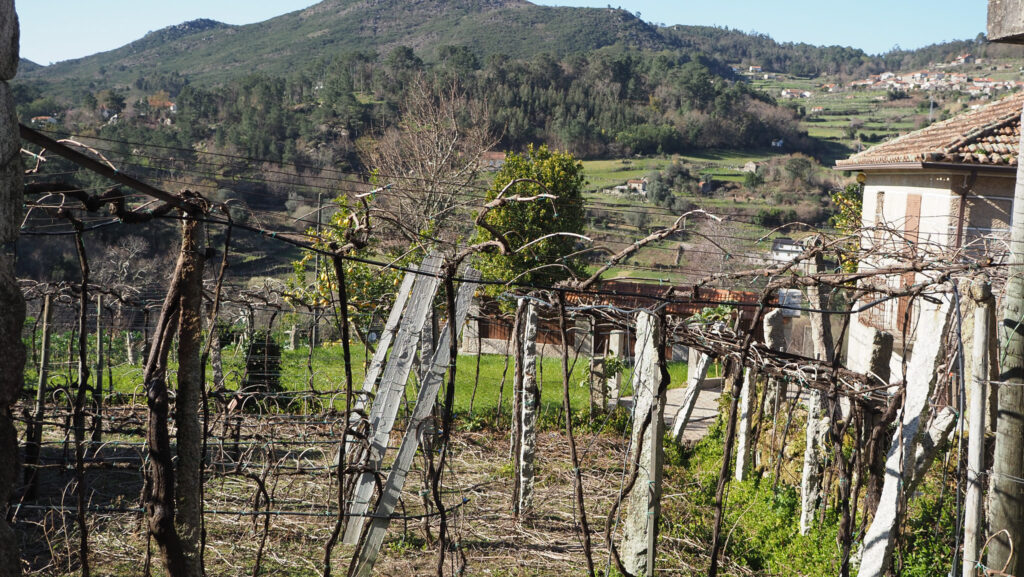
Then we headed back down to Vale de Podros, where Constantino has his vineyards. We saw the first plot, owned by his wife’s cousin, which gave birth to the debut of Zafirah. He’s added some vines here, and now gets around a ton from this site. Altitude is over 300 m, so it is quite marginal. We see a 14th century wine press in the village. Back in the day, winemaking would have been quite similar to Zafirah, with the extraction taking place before fermentation.
There’s a new plot that he’s planting with Brancellao and Trousseau (Bastardo is the local name).
And an old plot, with very old ramada-trained vines.
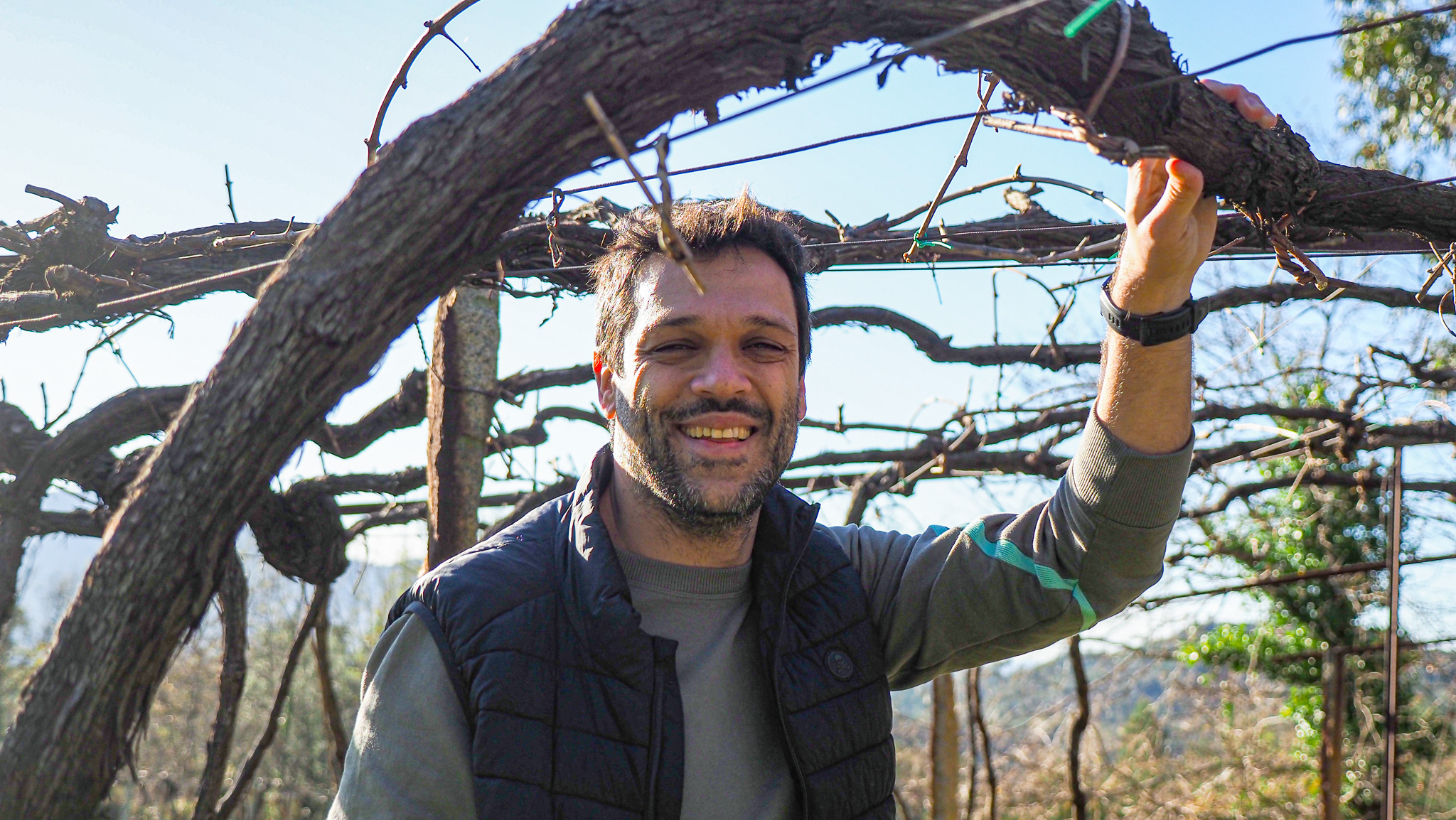
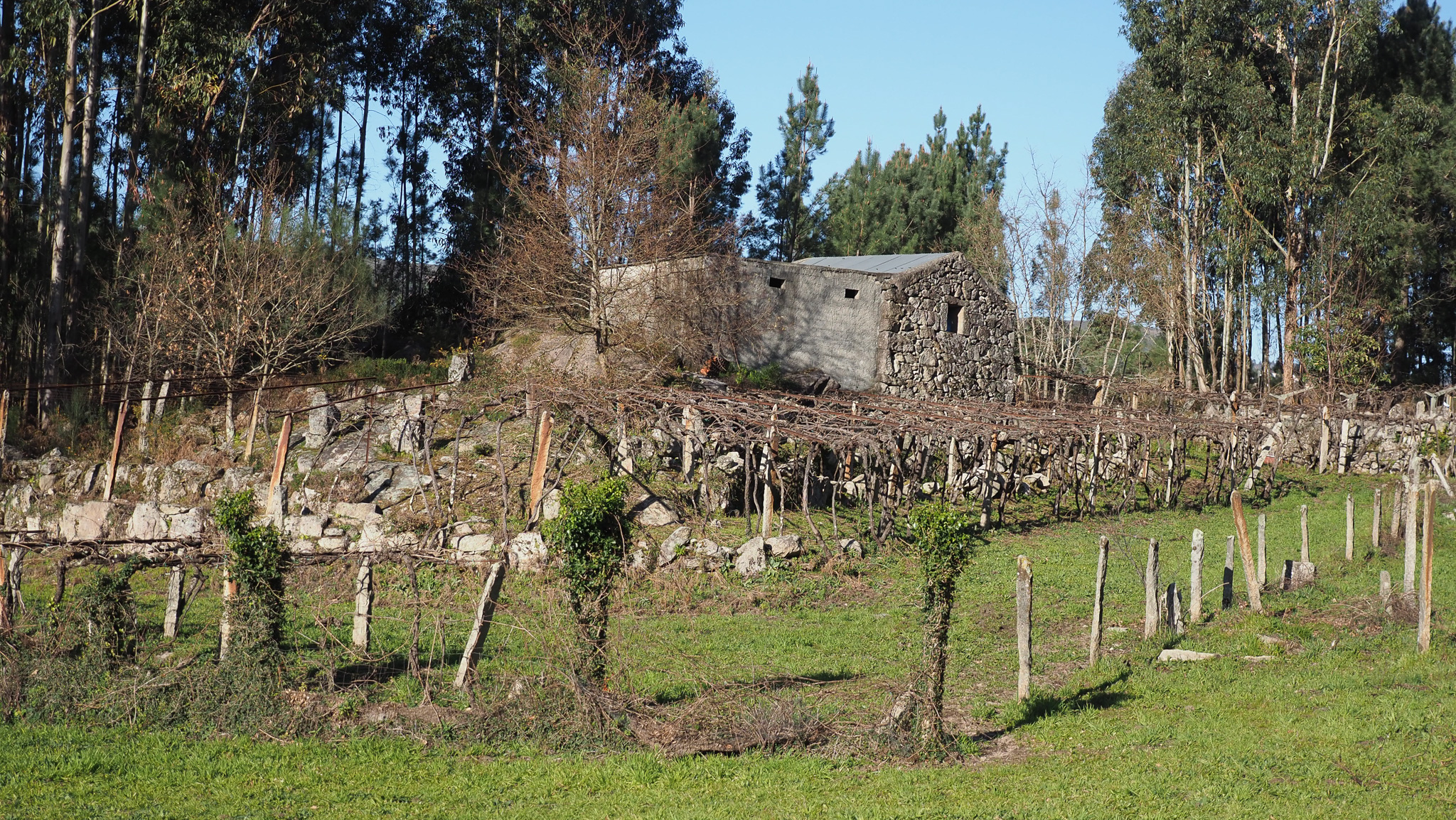
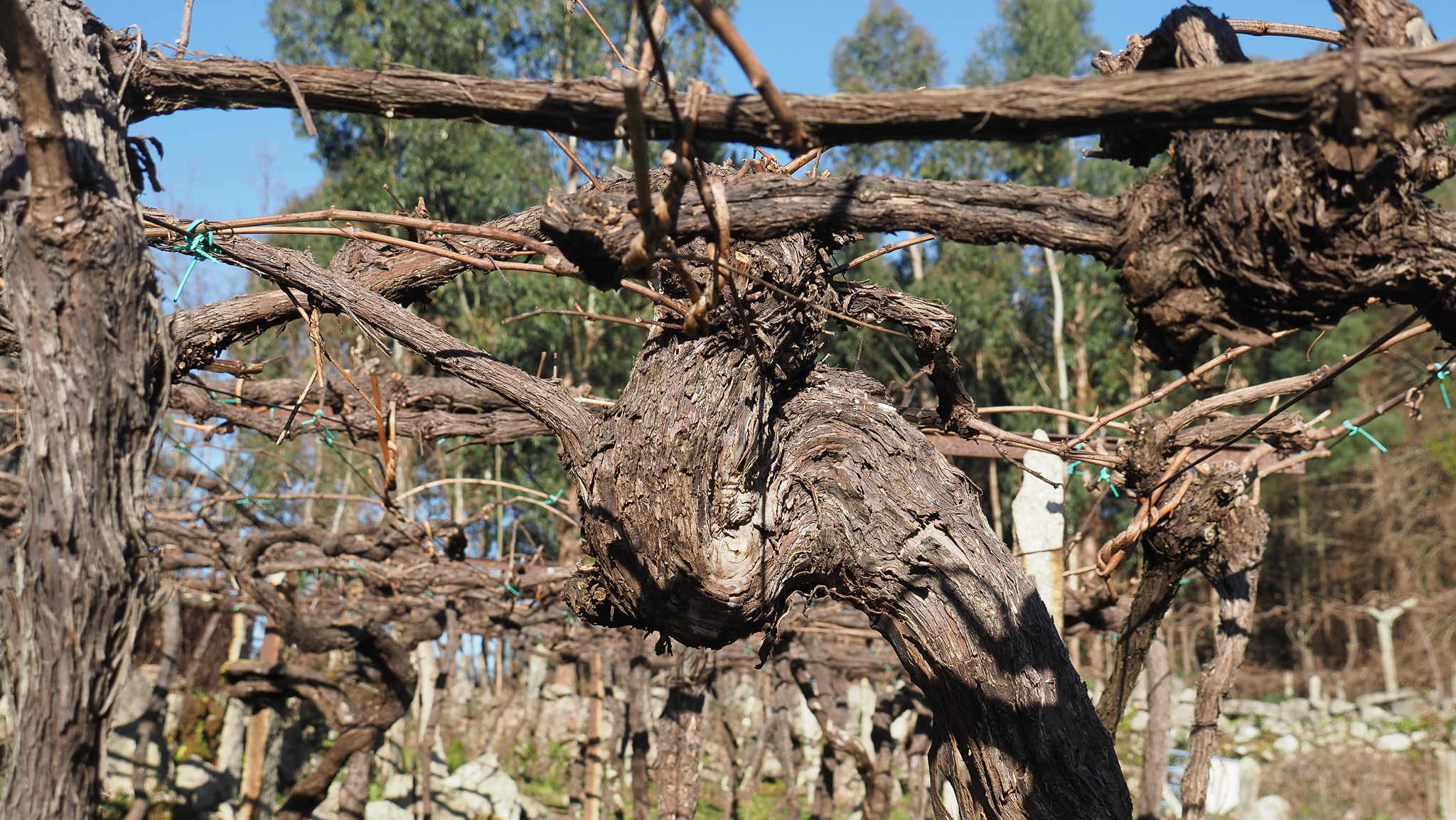

And finally another plot that he planted some years ago, which is trellised.
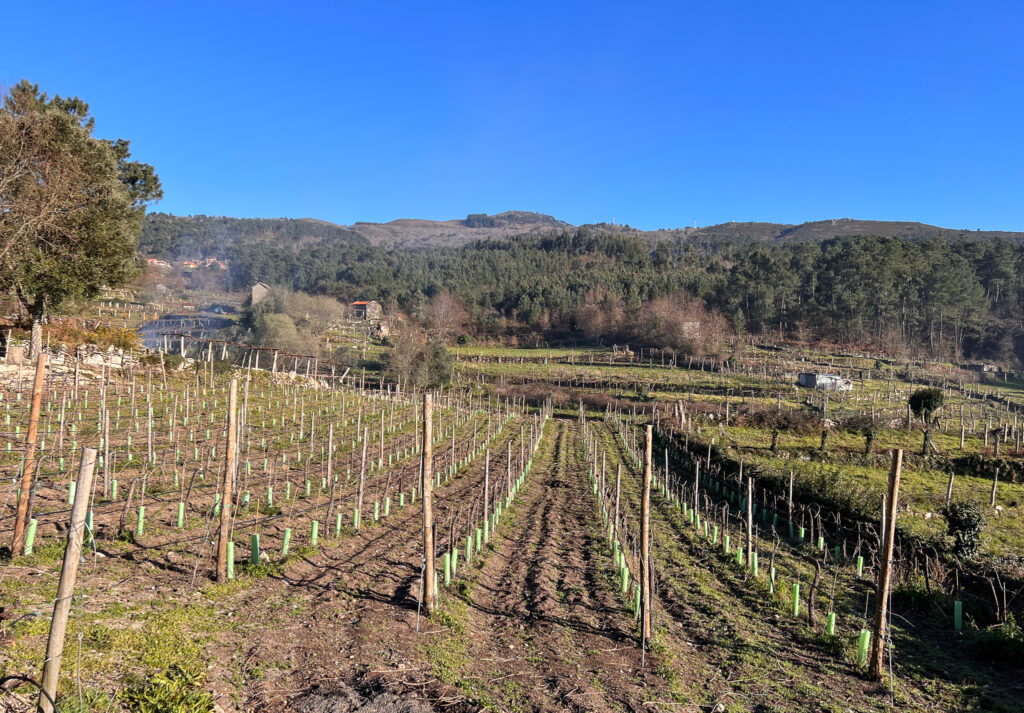
THE WINES
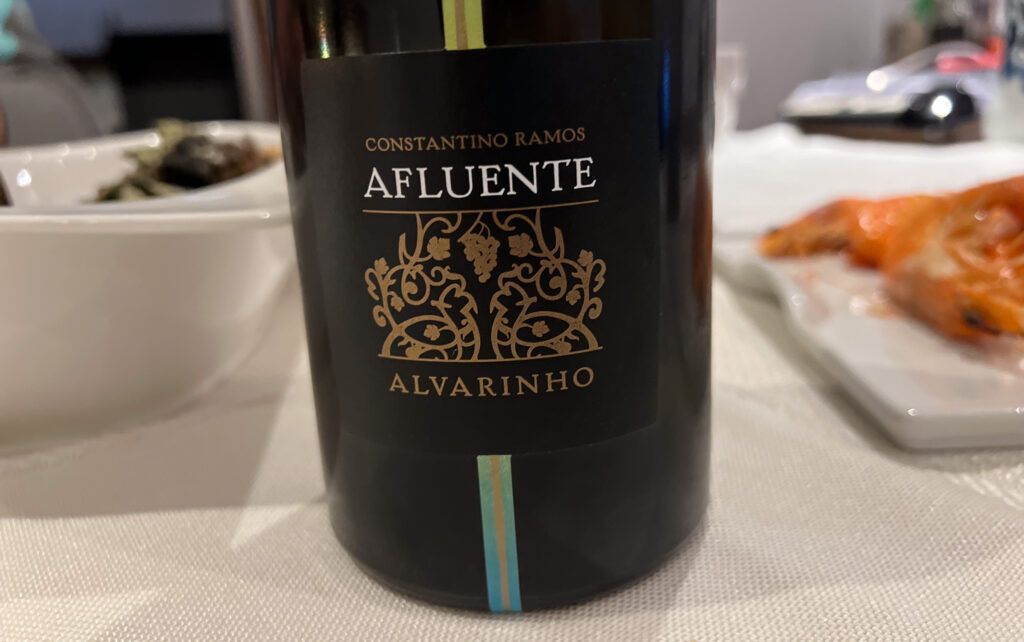
Constantino Ramos Afluente Alvarinho 2019 Monçao e Melgaço, Vinho Verde, Portugal
From a vineyard at 200m in the hamlet of Reba de Mouro. Cold settling then aged in used 500 litre barrels. So intense, fresh and mineral with precision and good acidity but also texture: fine minerals and spices with crisp pear and citrus and just a tiny hint of apricot richness. Constantino uses wild yeast to try to avoid too much exotic fruit flavour, and this also means that the barrel ferment temperatures don’t get above 22-23 C. Lovely brisk acid on the finish with a saline twist. This is serious and potentially ageworthy. 94/100 (22€ in Portugal)
Constantino Ramos Afluente Alvarinho 2020 Monçao e Melgaço, Vinho Verde, Portugal
Complex, mineral and saline with lovely precision. There’s a hint of pear and white peach richness here with tapering citrus fruit. It has generosity but also some focus and a mineral edge. Expressive. 94/100
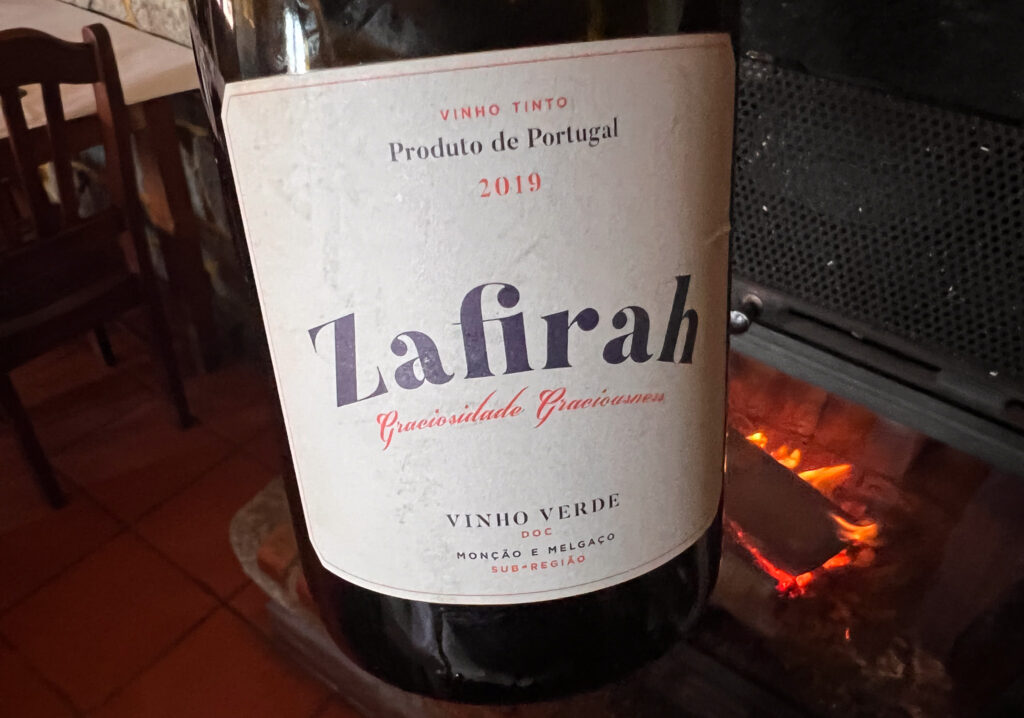
Constantino Ramos Zafirah 2018 Monçao e Melgaço, Vinho Verde, Portugal
Lovely cherry and berry fruits with some subtle sappy, spicy notes. There’s some richness to the fruit with sweet and slightly lush black cherry and plums. There’s a nice texture here with a black cherry core and some subtle grainy structure. 94/100
Constantino Ramos Zafirah 2019 Monçao e Melgaço, Vinho Verde, Portugal
11.5% alcohol. Zafirah is an Arabic word for graciousness. Old ramada (pergola) vines, and a blend of Brancellao, Caino, Espadeiro, Vinhao and Bourraçal. Destemmed into plastic bins, 24 h cold soak, then basket press and ferment as a white in 30% used barrels (225 l) and 70% stainless steel. Low pH starting at 3.1 going up to 3.3, Below 50 ppm sulfites. This has a little bricking at the rim, but still quite full colour. Lovely freshness with sour cherry and plum fruit as well as a bit of raspberry. Juicy and crunchy with nice acidity and a sense of vitality. 93/100 (13€ in Portugal
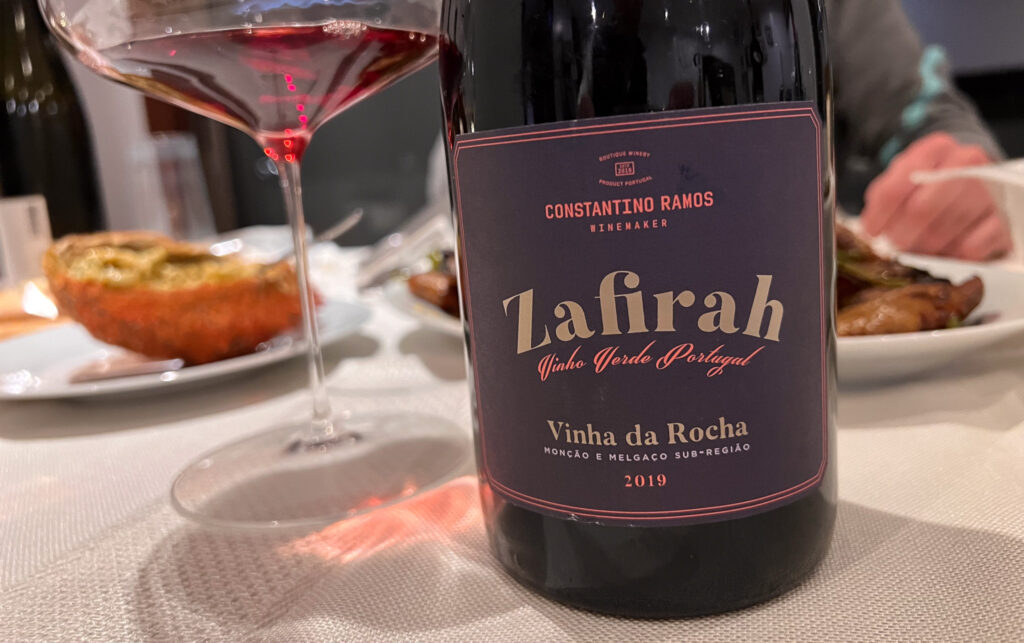
Constantino Ramos Zafirah Vinha da Rocha 2019 Vinho Verde, Portugal
This comes from a very old plot and in 2019 he made just one barrel. Very fresh and taut with redcurrant and red cherry fruit with good acidity. Linear and precise with a supple, slightly sappy edge. Really pure and fine with lovely focus and delicacy. Nice precision here. 94/100
Finally, a wine Constantino has made in the Azores.
Constantino Ramos Materrameta Branco 2021 Açores, Portugal
11.5% alcohol. This is from Terceira, an island in the west of the Açores that gets less sun. This is half in oak with malolactic fermentation, and half in stainless steel without. Lovely balance with a bit of pear and peach richness meshing seamlessly with citrus fruit. Vivid and vital with nice texture. Slightly crystalline and saline with purity and some mineral hints. 94/100
See also: a film of the visit

